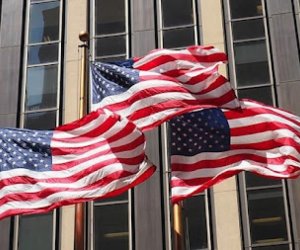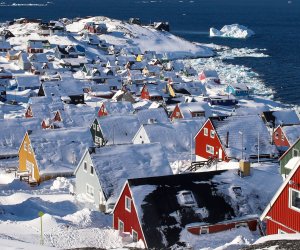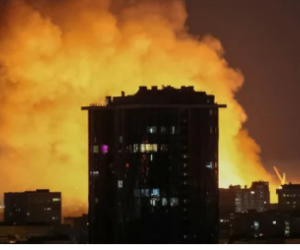Putin’s Ukraine gambit hurts economy as allies lose billions

President Vladimir Putin’s brinkmanship in Ukraine has already cost some of his closest comrades billions of dollars. The other 144 million Russians may also pay a price.
Putin’s troop buildup in Crimea triggered the biggest stock selloff in five years on March 3. It also pulled the ruble to a record low, prompting the central bank to raise interest rates the most since 1998, when a cash-strapped government stumbled toward default.
Longtime Putin ally Gennady Timchenko and his partner Leonid Mikhelson lost a combined $3.2 billion of their wealth after their gas producer OAO Novatek tumbled 18 percent.
“Russia will be the big loser of the crisis in Ukraine,” said Timothy Ash, chief emerging-market economist at Standard Bank Group Ltd. in London. “There’ll be a big hit to domestic and foreign confidence, less investment and likely increased outflows, likely losses for Russian banks with exposure in Ukraine, a weaker ruble and weaker growth and recovery.”
The tensest standoff with the West since the end of the Cold War is exposing the weakness of an economy rebuilt on the back of the energy industry. With oil and gas accounting for more than half of all exports and energy prices stagnant, the growth potential is all but exhausted, prompting officials in Moscow to sound the recession alarm even as the country’s main trading partners recover.
Troop Buildup
Russia needs a new, more diversified economic model to secure future expansion, Antonio Spilimbergo, the International Monetary Fund’s mission chief in Moscow, said in a report last month. The $2 trillion economy decelerated for a fourth year in 2013 as consumer spending weakened and investment sagged along with demand for energy. Growth slowed to 1.3 percent last year, the least since a 2009 recession, from 3.4 percent in 2012.
A Snapshot of Ukraine's Past and Future
Putin is seeking to regain influence over Ukraine after the overthrow of Kremlin-backed President Viktor Yanukovych, who was deposed by lawmakers on Feb. 22 after clashes with protesters in Kiev left at least 95 people dead. Ignoring warnings from the U.S. and the European Union, Putin has since sent thousands of troops to augment the 15,000 already in Crimea, where Russia has stationed the Black Sea Fleet since its founding by Catherine the Great in 1783.
The crisis has helped fuel the ruble’s 9 percent slide this year against the dollar, the most among 24 emerging-market currencies tracked by Bloomberg after Argentina’s peso. The Russian currency weakened 1.8 percent against the dollar March 3 even after the central bank unexpectedly raised its key interest rate by 150 basis points and spent as much as $12 billion defending the currency, according to ING Groep NV. The Micex Index sank as much as 13 percent.
Foreign Funding
Putin’s gambit is already threatening to derail $8 billion of international loans sought by at least 10 Russian companies including billionaire Mikhail Fridman’s VimpelCom Ltd., according to data compiled by Bloomberg. U.S. Secretary of State John Kerry threatened to kick Russia out of the Group of Eight and impose asset freezes and travel bans on Kremlin officials. That may force bankers to re-evaluate potential deals, according to UralSib Capital in Moscow.
The Micex Index fell 0.4 percent today, with Novatek sliding 0.3 percent. The benchmark surged 5.3 percent yesterday after Putin said he doesn’t have plans to annex Crimea. The ruble was unchanged at 9:46 p.m. in Moscow after a rebound yesterday. Even so, the damage inflicted on investor sentiment will be felt for months if not longer, said Lilit Gevorgyan, senior economist at IHS Global Insight in London.
Capital Flight
The capital flight echoes the aftermath of Putin’s last military foray into a fellow former Soviet republic, Georgia, in August 2008 and the collapse of Lehman Brothers Holdings Inc. the following month. Following those events through February 2009, investors pulled at least $290 billion out of the country, according to BNP Paribas SA estimates. That war, over two Russia-backed breakaway regions, also helped wipe $230 billion off the combined wealth of Russia’s 25 richest men over a five-month period, according to Bloomberg calculations.
Even before the protests in Kiev turned deadly last month, Deputy Economy Minister Andrei Klepach said capital outflows were increasing and may reach $35 billion in the first quarter, more than half of the $63 billion for all of 2013.
The military threat in Crimea can be added to the list of reasons behind the capital exodus, which includes corruption, red tape and a feeble legal system, Ash of Standard Bank said. Russia is the world’s most corrupt major economy, ranking alongside Pakistan and Nicaragua at 127th of 176 nations in the annual Corruption Perceptions Index compiled by Transparency International, a Berlin-based watchdog.
‘Biggest Humiliation’
“The loss of face that’s been suffered in the past week or so is arguably the biggest humiliation that Putin has faced and Russia is not used to losing these battles on its doorstep,” Neil Shearing, chief emerging-markets economist at Capital Economics Ltd., said by phone from London. “Even though the events in Ukraine are shaped by politics rather than economics, there’s potential for economic fallout for Russia.”
In November, when Putin scuttled Ukraine’s planned free trade deal with the EU by offering Yanukovych $15 billion of aid and cheaper gas, he said Russian banks had $28 billion of loans and assets in the country.
Souring loans may “materially affect the solvency” of Russian banks with “significant” assets in Ukraine, Fitch Ratings said Feb. 25, adding that state-owned lenders can count on government funding if needed. The banks with the biggest exposure are Vnesheconombank, the development bank known as VEB, with 74 percent of its capital, Gazprombank with about 40 percent and VTB Group with 14 percent, according to Fitch.
Vital Pipelines
Russian companies also have investments in Ukraine’s energy, defense and agricultural industries. The country is Russia’s fifth-largest trading partner, with turnover of $39.6 billion last year, according to data from the Federal Customs Service in Moscow. Exports to Ukraine were $23.8 billion, while imports totaled $15.8 billion.
More vital to Putin is Ukraine’s network of pipelines, through which state-run OAO Gazprom sends more than half of its exports to Europe, where it has a quarter of the market.
Even so, Putin is prepared to do whatever it takes to stop Ukraine from aligning with the West, said Michael Ganske, head of emerging markets at Rogge Global Partners Plc in London.
Putin considers Ukraine and its 45 million people key to his goal of building a trading bloc to rival the EU, according to Ganske. His customs union, which Yanukovych planned closer ties with, is currently comprised of Russia, Belarus and Kazakhstan, though Armenia has also agreed to join.
“Putin cares for the economy, but he cares more for the greatness of Russia and regional influence,” Ganske said. “As a former spy, Putin has this grand-Russia idea in his head and he just doesn’t accept that Russia’s importance in the geopolitical context has decreased. Putin doesn’t like the idea of Ukraine moving further away from Russia and becoming part of the EU at some stage, let alone NATO.”
(Bloomberg)
ANN.Az
Latest news 
More news 



































 Photo
Photo 



 Video
Video 

